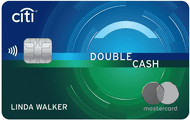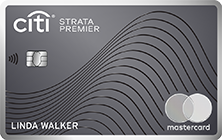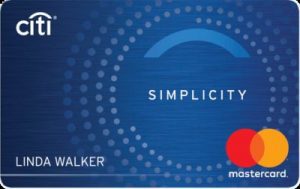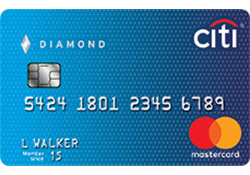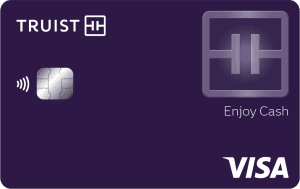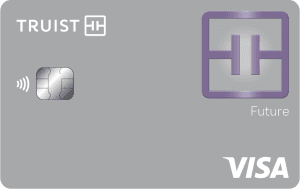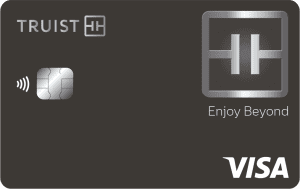When picking a bank, things like the types of products they offer, account features, savings rates, fees, and how well they help customers are really important.
Truist Bank and Citibank are two big players in banking, and in this article, we'll look at both to help you decide which one might be a better fit for what you need financially.
Checking Accounts
Citibank is the winner when it comes to checking accounts. They offer bank accounts for different types of customers, including premium features and perks for those who deposit high rates that you won't be able to find with Truist Bank.
-
Account Types
Citi provides a diverse range of checking account options categorized into Everyday Banking and Premium Banking.
Everyday Banking includes Citi Access Account and Citi Regular Checking, while Premium Banking offers Citi Priority Account, Citigold Checking Account, and Citigold Private Client.
Citi Account | Monthly Fee | Avg Day Balance To Waive Fee |
|---|---|---|
Citi Access Checking | $5 | $30,000 |
Citi Regular Checking | $15 | $30,000 |
Citi Priority Account Package | $0 | $30,000 |
Citigold Account Package | $0
| $200,000 |
Citigold Private Client | $0 | $1,000,000 |
Truist Bank offers personal checking accounts with many features and easily waived monthly fees. However, there is no wide selection of accounts as you have with Citi:
Truist Bank Account | Monthly Fee | Average Day Balance To Waive |
|---|---|---|
Truist One Checking account | $12 | $500 |
Truist Confidence Account | $5 | $500 |
-
Features
Citi's basic checking features include no overdraft or returned item fees, online banking, access to 65,000+ fee-free ATMs, check writing, mobile check deposits, and $0 liability for unauthorized charges.
Premium checking offers additional perks such as financial check-ups from Citi Personal Wealth Management, higher savings rates, unlimited reimbursement of non-Citi ATM fees, a dedicated team, waived online transfer fees, higher limits for deposits and withdrawals, cash back subscription rebates, and advanced wealth planning services.
Citi Account | Main Features |
|---|---|
Citi Access Checking | No Overdraft or returned item fees, online banking, 65,000+ fee-free ATMs |
Citi Regular Checking | Check writing, mobile check deposits, $0 liability for unauthorized charges |
Citi Priority Account Package | Financial check-ups from Citi wealth management, higher savings rates |
Citigold Account Package | Unlimited reimbursement of non-Citi ATM fees, waived online transfer fees
|
Citigold Private Client | Higher limits for deposits & withdrawals, cash back subscription rebates, advanced wealth planning |
The Truist bank checking account comes with lots of useful features to fit different customer needs. They also have personal debit cards that are easy to use and keep your money safe.
With these cards, you can control your spending by setting limits and keeping track of your purchases. You even get cash back with special deals, and you can make your card extra secure by locking and unlocking it using Truist Mobile.
Truist Bank Account | Main Features |
|---|---|
Truist One Checking account | Loyalty Bonus on Truist credit cards, Free first order 10-pack checks |
Truist Confidence Account | mobile bill pay, No overdraft fees, No check cashing fees |
Enrolling in Truist Bill Pay is a straightforward process that involves a quick redirection to the Truist website for completion.

Savings Accounts
Citibank is our top pick for savings accounts because it provides better rates than Truist Bank and offers more choices for savers.
The Citi Accelerate Savings is a high-yield savings account that gives 0.03% – 1.18% APY, one of the best among traditional banks. But keep in mind, that this high-yield account is only for people in specific states.
Truist Bank offers savings accounts with different features. The Truist One Savings account provides benefits like no overdraft fees with Truist One Checking and the chance to earn interest. It's a helpful tool for building an emergency fund or working towards specific financial goals.
Truist also has a money market account that you won't find with Citibank, but the rates are comparatively low.
Truist One Savings | Citi Accelerate Savings | |
|---|---|---|
Savings Rate | 0.01% | 0.03% – 1.18%
|
Minimum Deposit | $50 | $0 |
Fees | $5
The monthly maintenance fee can be waived by maintain a minimum daily ledger balance of $300 OR
schedule a recurring preauthorized internal transfer of $25 or more per statement cycle into the Truist One Savings account OR
waived for a minor under the age of 18 OR
waived with ANY related Truist checking product
| $4.50/$10 per month
Can be waived if you maintain an average combined monthly balance of $500/$1,500 in your eligible accounts, make one enhanced direct deposit or one qualifying bill payment per statement period
|
Certificate Of Deposits (CDs)
When it comes to CDs, Citibank is a better choice for us.
Truist Bank and Citibank both have high CD rates, but they're only available for specific promotional terms.
Keep in mind that Truist Bank doesn't show CD rates on its website, and you can only open Truist CDs in person at a branch, not online.
-
Citibank CD Rates
CD Term | APY | Early Withdrawal Penalty |
|---|---|---|
3 Months | 3.00%
| 90 days interest |
6 Months | 1.5% – 2%
| 90 days interest |
7 Months (Featured) | 2.50% – 3.00%
| 90 days interest |
9 Months | 2.5%- 3%
| 90 days interest |
12 Months | 2.25% – 2.75%
| 90 days interest |
12 Months – No Penalty | 0.05% | / |
18 Months | 1.01%
| 180 days interest |
24 Months | 0.5% – 1.01%
| 180 days interest |
30 Months | 0.10% | 180 days interest |
36 Months | 2.00% | 180 days interest |
48 Months | 2.00% | 180 days interest |
60 Months | 2.00% | 180 days interest |
Credit Cards
Citibank is one of the national leaders when it comes to credit cards and our winner in this category, as it offers (and also issue) a variety of cards for different purposes, while Truist Bank cards are more limited, not to mention the difference in redemption options.
Citibank offers a diverse range of credit cards, catering to various financial needs and lifestyles. Some notable Citibank credit cards include the Citi Double Cash Card and Citi Custom Cash for cashback rewards, the Citi Simplicity card for a long 0% intro APR, and Citi Secured for those who want to build credit.
The Citi Premier® Card is designed for travel enthusiasts, providing points on travel, dining, and entertainment expenses. Citi also offers many co-branded card such as the AAdvantage cards in partnership with American Airlines, Best Buy card, Costco card and more.
Card | Rewards | Bonus | Annual Fee |
| Citi® Double Cash Card | 1% – 2%
2% cash back rewards rate – 1% every time you swipe and another 1% upon payment.
| N/A
$200 cash back after spending $1,500 on purchases in the first 6 months
| $0 |
|---|---|---|---|---|
| Citi Premier® Card | 1X – 10X
10X per dollar on hotel, car rentals and attractions booked through CitiTravel.com, 3X points on restaurant, supermarket, gas station, and air travel and other hotels purchases, and 1X points per dollar on all other purchases
| 75,000 points
60,000 bonus ThankYou® points after spending $4,000 in purchases within the first three months of account opening
| $95 |
| Citi Simplicity® Card | None | None | $0 |
| Citi® Secured Mastercard® | None | None | $0 |
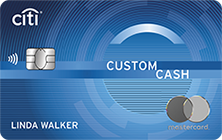 | Citi Custom Cash℠ Card | 1-5%
5% cash back on your highest eligible spend category each billing cycle up to the first $500 spent and 1% cash back thereafter
| $200
$200 cash back after you spend $1,500 on purchases in the first 6 months of account opening (20,000 ThankYou® Points, which can be redeemed for $200 cash back)
| $0 |
Truist Bank also offers a selection of credit cards, with options that cater to various needs but with fewer redemption options compared to Citibank.
The Truist Enjoy Cash is best for those who want to earn cashback, while travelers may prefer the Truist Enjoy Travel which offers a higher point rewards ratio on travel categories. The Truist Enjoy Beyond offers even more travel benefits.
For those who don't have good credit, the Truist Future card can help those who need 0% intro APR, and there is also a secured card, with a modest annual fee.
Card | Rewards | Bonus | Annual Fee |
| Truist Enjoy Cash credit card | 1% – 3%
3% cash back on gas and EV charging, 2% on utilities and groceries (up to the $1,000 monthly spend cap) and 1% on all other eligible purchases
OR 1.5% cash back on all eligible purchases | 0% Intro APR 12 months on purchases | $0 |
|---|---|---|---|---|
| Truist Enjoy Travel credit card | 1x – 2x
2x miles per $1 spent on airfare, hotels, and car rentals, 1x on all other eligible purchases | 20,000 miles
20,000 bonus miles when you spend $1,500 in first 90 days after account opening | $0 |
| Truist Future credit card | N/A | 0% Intro APR 15 months on balance transfers and purchases | $0 |
| Truist Enjoy Beyond credit card | 1x – 3x
3x points per $1 spent on airfare, hotels, and car rentals, 2x on dining and 1x on all other eligible purchases | 30,000 points
30,000 bonus points when you spend $1,500 in first 90 days after account opening | $195 |
| Truist Enjoy Cash Secured credit card | 1% – 3%
3% cash back on gas, 2% on utilities and groceries (up to the $1,000 monthly spend cap) and 1% on all other eligible purchase | N/A | $19 |
Mortgage And Loans
When it comes to lending products, there is no clear winner as both banks offer more or less the same products, but if we have to choose one – Truist Bank is winning.
Both banks offer various options for home buyers through different types of mortgage programs and options for those who need personal loans. Truist also offers auto loans and special loans, such as boat loans and RV loans, which are not available through Citibank.
None of these banks will have a solution for customers who need student loans, including refinancing.
Which Bank Is Our Winner?
Citibank is our winner due to its extensive checking account options, various credit cards, and better savings account rates than Truist Bank.
However, it is crucial to assess various factors, with a primary focus on those that are significant for your specific needs. This could include considerations such as banking services, overdraft assistance, frequent ATM usage, proximity to bank locations, and other elements that vary from person to person.
Understanding Our Banking Comparison Methodology
In our thorough banking comparison, The Smart Investor team carefully reviewed and compared banks across five key categories:
Checking Accounts (30%): We examined features like direct deposit, debit card availability, monthly fees, ATM and branch access, check deposit, bill pay options, and account alerts. We also considered any special offers available to customers.
Savings Accounts and CDs (20%): Our focus was on important factors such as the Annual Percentage Yield (APY), minimum deposit requirements, account flexibility, FDIC insurance coverage, special savings offers, variety of CDs, automatic renewal options, and early withdrawal penalties.
Credit Cards (15%): We analyzed rewards programs, annual fees, introductory bonuses, travel benefits, APR, and balance transfer options offered by each bank's credit cards to provide a comprehensive comparison of available features.
Lending Options (15%): We assessed the variety of loan options provided, including personal loans, student loans, mortgages, secured loans, HELOCs, and Home Equity Loans, offering insights into the banks' lending capabilities.
Customer Experience and Bank Reputation (20%): Our evaluation included an analysis of online banking and mobile app usability and ratings, accessibility of customer support, online reviews, JD Power research, Trustpilot ratings, and overall financial stability, providing a holistic view of customer experience and reputation.
Compare Truist Versus Other Banks
While Truist is a full-service bank where you can find almost any financial product, Chase is our winner. Here's why – and what else to know: Chase vs. Truist Bank
There is no clear winner as to whether Truist Bank or Bank of America is a better choice, but we prefer the latter. Here's why.
Wells Fargo offers better savings rates than Truist Bank, more selection for checking accounts and better credit cards. Here's our comparison: Truist Bank vs. Wells Fargo Bank
Overall, we like Fifth Third a bit more than Truist bank, mainly due to the various checking options. Truist is better in credit cards.
Each bank excels in different categories, but our winner is M&T Bank over Truist. There are some reasons for that, here's our comparison: Truist Bank vs. M&T Bank
Our winner is PNC Bank as it offers more options for checking and higher savings rates than Truist bank. Here's our comparison: Truist Bank vs. PNC Bank
Both Truist and TD Bank are active in a variety of states, such as Florida, Georgia, North And South Carolina, and more. Here's our winner: Truist Bank vs. TD Bank
There is no clear-cut answer to which bank is better, but Regions Bank is better than Truist if we have to choose one. Here's why: Truist Bank vs. Regions Bank
Our preferred choice is American Express, which provides a comprehensive banking package that outshines Truist Bank. Here's how they compare: Truist Bank vs. American Express Bank
Compare Citibank Versus Other Banks
The Chase and Citi checking accounts both have no minimum deposit and a monthly account maintenance fee of $12. This can also be waived with a balance of $1,500 or more, or with qualifying deposits.
Furthermore, both have a very impressive selection of more than credit card options.
Read Full Comparison: Chase vs Citi: Which Bank Account Wins?
Capital One began as a credit card company, but it has recently expanded its banking product line. Capital One offers checking and savings accounts, children's accounts, auto finance and refinancing, in addition to an impressive selection of credit cards.
Citi offers a diverse range of banking products, including checking and savings accounts, CDs, credit card options, mortgages, personal loans, wealth management plans, IRAs, and investment options.
Read Full Comparison: Citi vs Capital One: Which Bank is Best For You?
CIT Bank has a banking product line that rivals that of traditional banks. Savings accounts, CDs, an eChecking account, home loans, and mortgages are all available. The main shortfalls in this lineup are the lack of personal loans and a credit card option.
Citibank has a credit card background, but that doesn't mean it has a limited banking product line. Citi offers home loans, personal loans, lines of credit, wealth management options, and investments, as well as everyday and premium banking services.
Read Full Comparison: CIT Bank vs Citi: Which Bank Account Suits You Best?
The Citi checking account is a fairly standard product. The account does have a $12 monthly fee, but it is waived if you make a qualifying deposit or make a qualifying bill payment. Overdraft protection is also available, which automatically transfers funds from your savings account to avoid overdraft fees.
Because the American Express savings account has a high yield, the number of withdrawals or transfers you can make each month is limited to nine. It's also a nice touch that American Express allows you to choose paper statements if you prefer the old-fashioned way.
Read Full Comparison: American Express vs Citi: Where to Save Your Money?
Citi offers an excellent range of banking products that cover the majority of your financial needs.
Personal loans, mortgages, credit cards, investment options, IRAs, and wealth management plans are available in addition to savings and checking accounts. Barclays' product line is more streamlined. This bank offers credit cards, savings accounts, credit cards, and personal loans.
The most obvious product gap is the absence of a checking account. As a result, Barclays becomes more of a supplementary bank rather than your primary day-to-day financial institution.
Read Full Comparison: Citi vs Barclays: Which Bank Account Is Better?
Bank of America is a large banking institution, and its impressive banking product line reflects this. Aside from savings and checking accounts, there are home loans, auto loans, investment options, and a variety of credit cards. Citi also has a diverse product offering. Credit cards, CDs, personal loans, mortgages, IRAs, investment options, wealth management plans, and checking and savings accounts are all available.
As a result, if you want to switch from your current bank, either bank is a viable option because you won't have to make any compromises in terms of banking products.
Read Full Comparison: Bank of America vs Citi: Which Bank Suits You Best?
Discover began as a credit card company and has since expanded into banking services. As a result, it stands to reason that Discover would offer a diverse range of credit cards. Discover offers a simpler checking account. There are no account fees or minimum deposits, and you can earn 0.40 percent.
Citi offers home loans, personal loans, lines of credit, wealth management options, and investments, as well as everyday and premium banking services. This exemplifies Citi's viability as a viable alternative to the traditional high-street bank.
Read Full Comparison: Discover vs Citi: Compare Banking Options
Both banks offer a good selection of banking products, making it easier to switch from your current bank.
Citi offers CDs, personal loans, mortgages, IRAs, investment options, wealth management plans, and a variety of credit card options in addition to checking and savings accounts.
Wells Fargo provides savings and checking accounts, but it also provides mortgages, loans, and investment options such as IRAs, 401ks, and wealth management products.
Read Full Comparison: Citi vs Wells Fargo: Which Bank Account Is Better?
While U.S. Bank offers some better conditions when it comes to lending options, Citibank is our winner in this comparison. Here's why.
PNC Bank and Citibank are two big players in brick-and-mortar banking. Let's compare them side by side and see which is our winner: PNC Bank vs. Citibank
Citibank leads in credit cards, and TD Bank options for borrowers are broader. But what about the rest? Here's our comparison and winner: Citibank vs. TD Bank
We'll explore Citibank and M&T Bank savings accounts, checking accounts, CDs, credit cards, and lending products. Here's our winner: Citibank vs. M&T Bank
Citi is our winner for most consumers, but Ally is also a great option if you are willing to manage your account online. Here's why.

